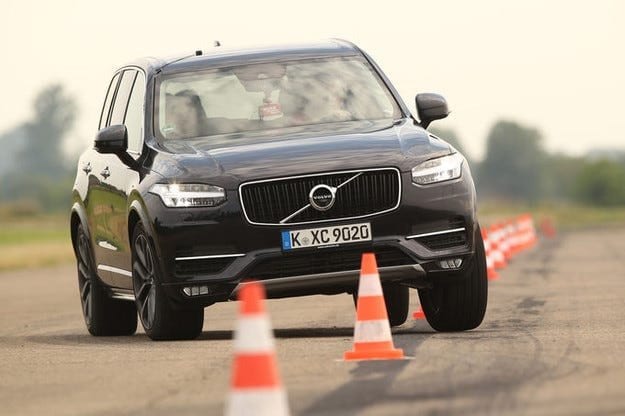
2020 summer tire rating for passenger cars
Content
This year, the beginning of the summer season can hardly be called favorable due to the economic crisis and, of course, the pandemic. But you still need to change your car for summer tires in order to preserve winter tires and not lose all the spikes.
Having fully analyzed the offers on the market, we have compiled a rating of 2020 summer tires for passenger cars, while taking into account various price segments: from budget options to priums.
Best inexpensive summer tires
It is worth stipulating that we will consider inexpensive tires, costing within 3500 rubles per 1 piece.
Dunlop SP Sport FM800 - one of the best in the budget segment
The advantages of this model include high indicators of strength, wear resistance (for 20-30 thousand km of run, there is practically no wear, of course, if you do not slip at every traffic light).
As for noise, it all depends on the car, because on cars with good noise insulation, the vast majority of tires will seem silent, and for cars with poor noise insulation, even the quietest tires can manifest themselves as noisy.
All the same, most buyers of this rubber speak of it as a fairly quiet rubber.
Another of the advantages of this model, which can be distinguished, is stability in a rut and an obstacle to aquaplaning.
Disadvantages: the disadvantages include - a weak side board (when hitting a curb, there is a chance to get a cut).
Cordian Comfort 2
Advantages:
- low noise level;
- road stability;
- good absorption of road surface irregularities;
- price-quality ratio.
The disadvantages can be attributed to a rather strong wear, although here it is necessary to take into account the expected driving style, the wear of the tread per season can be from 20-50%. And also from the experience of buyers, there is a high probability of the appearance of lateral hernias.
Viatti Strada Asymmetric V-130
The domestic brand, for its low cost, “pays back” with the following disadvantages:
- the likelihood of lateral hernias;
- while new tires may be noisier, later it becomes quieter;
- cannot boast of stamina in a rut;
- poor grip on wet surfaces (longer braking distances).
Obviously, this rubber should be taken for a quiet ride and on a good surface, in which case its cost will be a pleasant advantage. If you prefer dynamic driving, then you better take a closer look at the more expensive options, which we will consider later in the article.
Mid-price segment of summer tires
In the middle segment, we will consider tires from 4000 to 6000 rubles.
MICHELIN CrossClimate+
Summer tires Michelin CrossClimate + is a rather unusual solution in the automotive rubber market, since they are positioned as summer tires, but adapted to winter conditions.
The tires are developed from Michelin Energy Saver Plus, which are premium summer tires with low rolling resistance that, on average, last 20% longer than alternative tires.
The all-new V-shaped blocking tread has three different angles so it acts like a claw to maximize traction.
Advantages:
- Well drain water from the road contact patch;
- Low noise.
Disadvantages:
- Due to the peculiarity of the tread, it is prone to stuck small stones that fly out during movement;
- Weak side part, you need to be careful when hitting curbs;
- You should not expect grip and durability from this rubber on the road, since it still has all-season qualities.
Continental Premium Contact 6
In many ratings of summer tires in the mid-price segment, the Continental PremiumContact 6 comes first and this is not casual.
The average rating from more than 450 reviews is 4,7 out of 5.
The main advantages:
- Short dry braking distance;
- Good braking distances on wet roads and lateral stability;
- Resistant to aquaplaning;
- Good rolling resistance.
Among the shortcomings can be noted: noise.
Bridgestone Turanza T005
Bridgestone Turanza T005 summer tires are reinforced with rigid polyester for superior handling, while changes in the surface contribute to lower rolling resistance, which in turn has a positive effect on fuel consumption. This summer tire has a higher wear resistance than its predecessor.
Main conclusions:
- Sufficient braking distance on wet surfaces;
- Moreover, the tires are resistant to aquaplaning;
- Good braking distance on dry road surfaces.
- Good rolling resistance.
- Nice noise.
Premium summer tires
Michelin Pilot Sport 4
The tread pattern design adapts to the road for superior handling.
The Michelin Pilot Sport 4 is a high performance tire developed with input from BMW, Mercedes, Audi and Porsche.
The tread compound of the tire has been derived from Michelin's experience in motorsport competitions such as Formula E and the World Rally Championship.
Pilot Sport 4 is formulated with a unique blend of elastomers and hydrophobic silica to help the tire stay flexible for superior wet grip and reliable braking performance. Wide longitudinal grooves allow water to be dispersed from the road, reducing the risk of aquaplaning.
Toyo Proxes ST III
Toyo Proxes ST III is the perfect combination of dynamic looks and sports-oriented performance. With a wider tread and new compound, the Proxes ST III stops much earlier in the wet, delivering superior handling, excellent all-season performance, consistent wear and a smooth, quiet ride.
Due to its sporting tendencies, it is poorly suited for unpaved surfaces, it is still advisable to use rubber on asphalt.
Questions and answers:
What is the best rubber for the summer? Bridgestone Turanza T005, Continental Premium Contact 6, Michelin Cross Climate +, Nokian Tires Green 3. But the choice is also influenced by the riding style and weather conditions in the region.
Which budget tires to choose for the summer? Debica Passio 2, Yokohama A.drive AA01, Hankook Optimo K715, Fulda EcoControl, Michelin Energy Saver, Nokian i3. But some models of the domestic manufacturer perform well in a moderate driving style.
